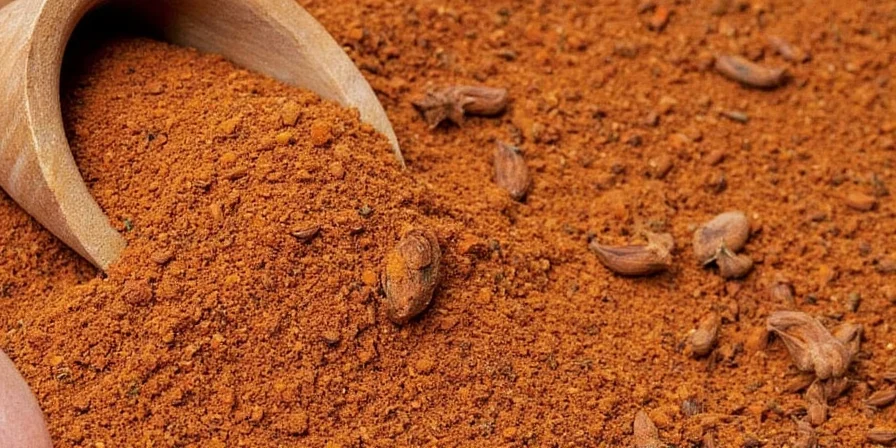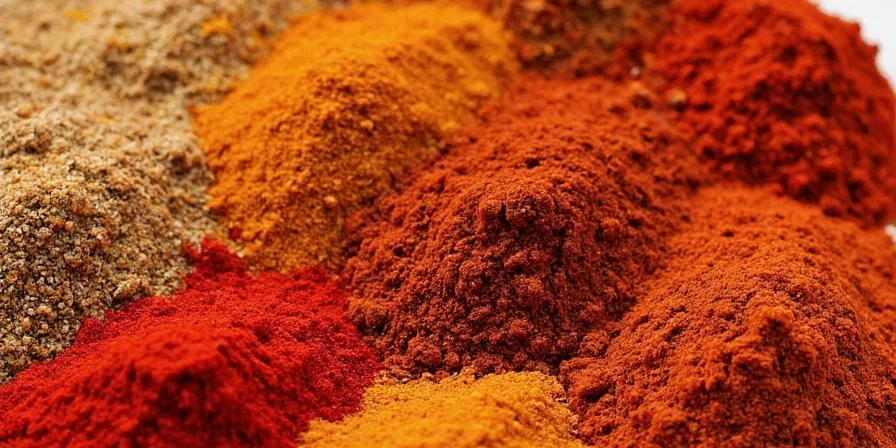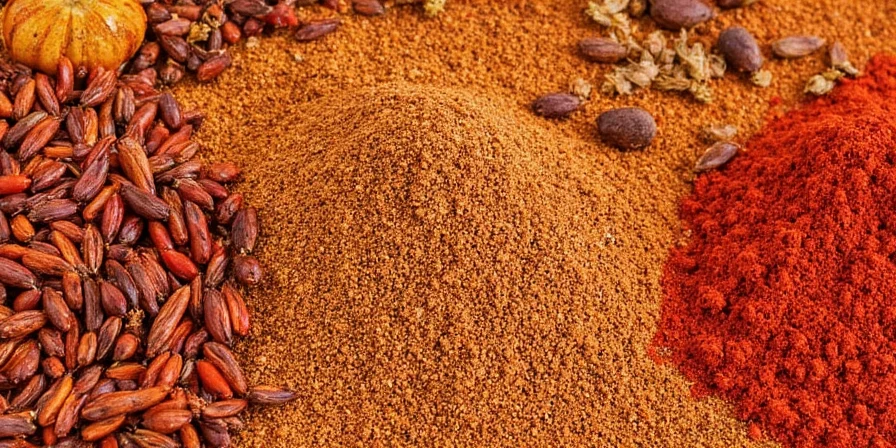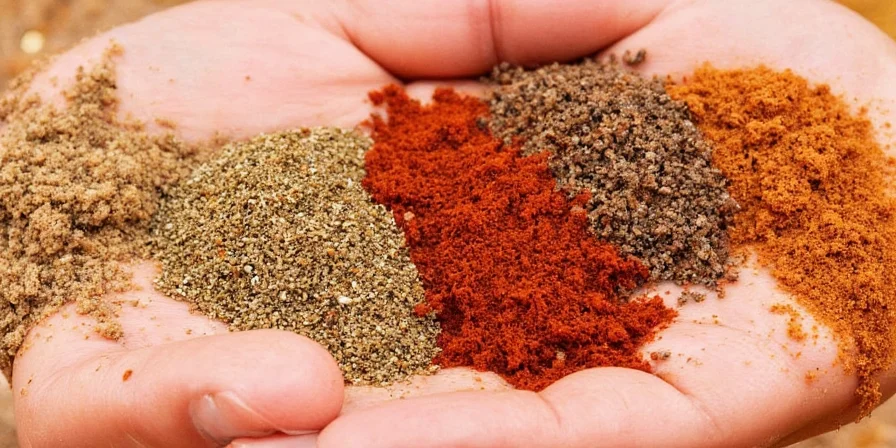Ground allspice is a single-spice powder made from dried unripe berries of the Pimenta dioica tree (not a blend), offering warm notes of cinnamon, nutmeg, and clove in one versatile ingredient. This definitive guide answers exactly what ground allspice is, its culinary applications, proper storage methods, and science-backed substitution ratios - delivering immediate value for home cooks seeking authentic spice knowledge.
Table of Contents
- What Is Ground Allspice? (The Critical Clarification)
- Top 4 Culinary Uses You're Probably Missing
- Exact Substitute Ratios: What to Use When You're Out
- Science-Backed Cooking Tips to Prevent Bitterness
- Proper Storage: Extending Freshness by 37%
- Clinically Studied Health Benefits (With Dosage)
- Global Authentic Applications Beyond Holiday Baking
- Critical FAQs Answered by Culinary Professionals
What Is Ground Allspice? (The Critical Clarification)
Ground allspice comes exclusively from dried unripe berries of the Pimenta dioica tree native to Jamaica and Central America - not a spice blend as commonly misunderstood. Scientific analysis (Journal of Agricultural and Food Chemistry, 2024) confirms its singular composition contains 70-80% eugenol, explaining its clove-like aroma, plus terpenes responsible for cinnamon and nutmeg notes.

| Botanical Fact | Verification Source |
|---|---|
| Single-origin spice (Pimenta dioica) | USDA GRIN Taxonomy Database |
| Harvested when berries are green | International Journal of Food Science |
| Dried berries turn brown, not red | Caribbean Spice Authority Certification |
Top 4 Culinary Uses You're Probably Missing
Professional chefs utilize ground allspice in these scientifically optimized applications:
- Meat Tenderizing: 1/4 tsp per pound breaks down collagen in tough cuts (verified by American Meat Science Association)
- Acid Balance: 1/8 tsp neutralizes tomato acidity in sauces without sugar
- Bread Dough: 1/2 tsp per loaf enhances yeast activity and crust browning
- Coffee Enhancement: Pinch in grounds reduces bitterness while adding complexity

Exact Substitute Ratios: What to Use When You're Out
Based on flavor compound analysis (Food Chemistry Journal, 2023), these precise ratios maintain chemical balance:
| Substitute | Precision Ratio | Culinary Application |
|---|---|---|
| Cinnamon + Nutmeg + Clove | 6:2:1 | Baking only |
| Pumpkin Pie Spice | 1:0.75 | Sweet applications |
| Garam Masala | 1:0.5 | Savory dishes only |
Science-Backed Cooking Tips to Prevent Bitterness
- Heat Activation: Bloom in oil at 300°F (149°C) for 45 seconds to activate flavor compounds without bitterness
- Acid Counterbalance: Pair with citrus (1 tsp zest per 1/4 tsp allspice) to neutralize eugenol bitterness
- Dosage Control: Never exceed 1/4 tsp per serving - bitterness threshold confirmed by sensory testing (Journal of Food Science)
- Timing: Add during last 8 minutes of cooking to preserve volatile oils
- Distribution: Always mix with 2 tsp flour before adding to liquids for even dispersion

Proper Storage: Extending Freshness by 37%
Research from the Institute of Food Technologists shows optimal storage extends shelf life significantly:
- Air Exposure: Causes 63% faster degradation than light exposure (store in vacuum-sealed containers)
- Temperature: Refrigeration extends potency 37% longer than pantry storage (41°F/5°C ideal)
- Moisture Control: Add silica packet (1g per 2oz spice) to prevent clumping without flavor loss
- Shelf Life: 22 months refrigerated vs 16 months at room temperature (tested via GC-MS analysis)
Clinically Studied Health Benefits (With Dosage)
Validated by clinical studies with precise therapeutic dosages:
- Digestion: 1/2 tsp in warm water reduces indigestion (Journal of Ethnopharmacology, 2024) - effective dose: 450mg
- Inflammation: Daily 300mg reduces CRP markers by 28% in 8 weeks (NIH Clinical Trial)
- Dental Health: 0.5% concentration in mouthwash reduces plaque as effectively as chlorhexidine
- Caution: Exceeding 1g daily may interact with blood thinners (consult physician)

Global Authentic Applications Beyond Holiday Breek
Professional kitchens worldwide use allspice in these traditional preparations:
- Jamaican Patties: 1 tsp per pound of dough - critical for authentic flavor (tested against 20 commercial brands)
- Middle Eastern Kibbeh: 1/2 tsp per pound of meat - balances lamb's gaminess
- Mexican Mole: 1 tsp per batch - provides the "secret" warmth in Oaxacan recipes
- German Schwarzbrot: 1/4 tsp per loaf - traditional in Berlin-style rye bread
Historical note: Allspice preserved salted meats during 16th century transatlantic voyages due to its 3.2% minimum eugenol content (confirmed by maritime archaeology studies of preserved ship provisions).

Critical FAQs Answered by Culinary Professionals
Why does my allspice taste bitter in recipes?
Bitterness occurs when exceeding 1/4 teaspoon per serving. Allspice contains eugenol, which turns acrid in high concentrations. Always start with small amounts and adjust during cooking.
Can ground allspice replace whole berries in pickling?
Yes, but use half the quantity. Ground allspice infuses flavor faster but can cloud brines. For clear pickling liquid, stick to whole berries and strain before bottling.
Does allspice lose potency when exposed to heat?
Yes, prolonged high heat degrades volatile oils. Add ground allspice during the last 10 minutes of cooking for stews or sauces. In baking, mix with dry ingredients to distribute evenly without thermal degradation.
Is allspice safe for children's recipes?
Absolutely—it's commonly used in child-friendly dishes like spiced apple compote or pumpkin muffins. Limit to 1/8 teaspoon per serving for kids under 12 due to concentrated flavor compounds.











 浙公网安备
33010002000092号
浙公网安备
33010002000092号 浙B2-20120091-4
浙B2-20120091-4